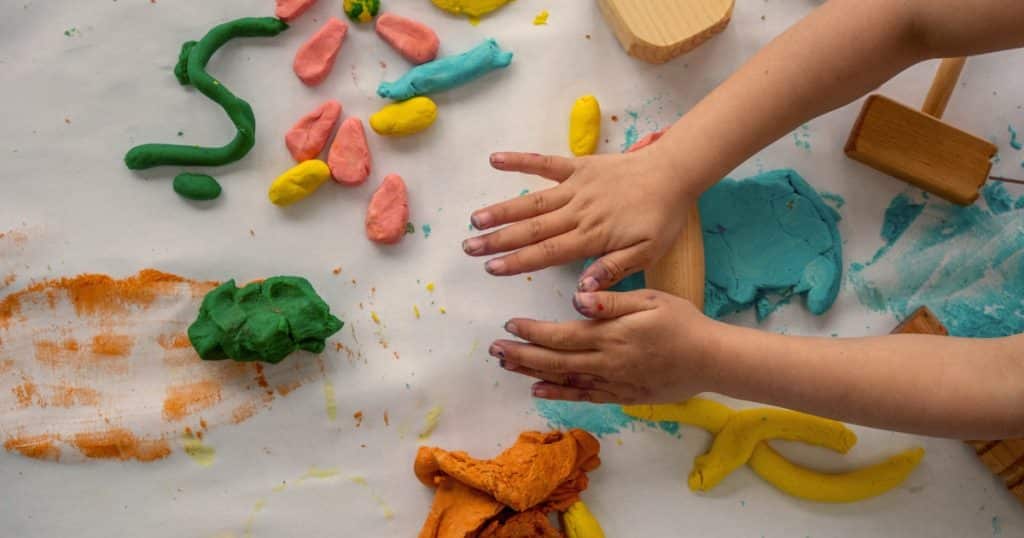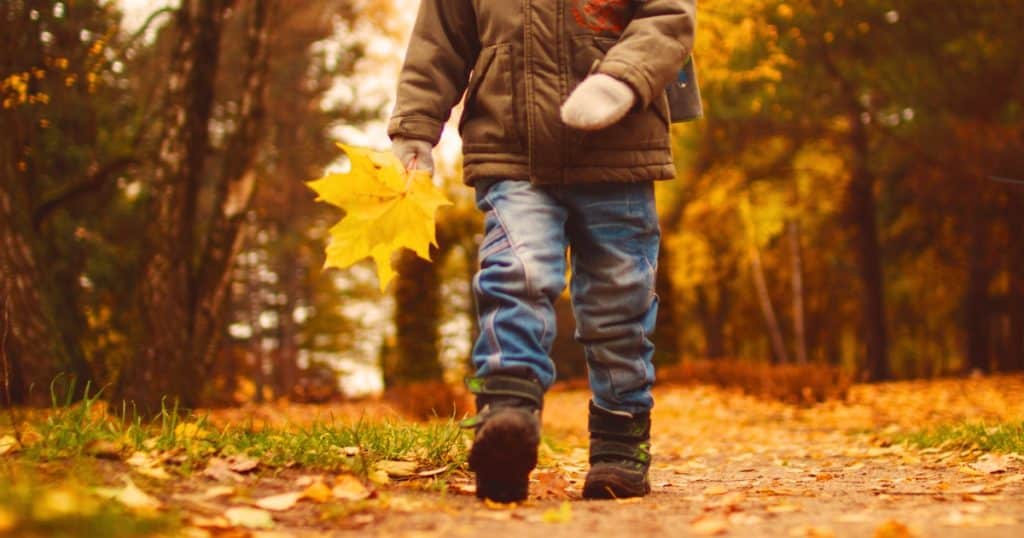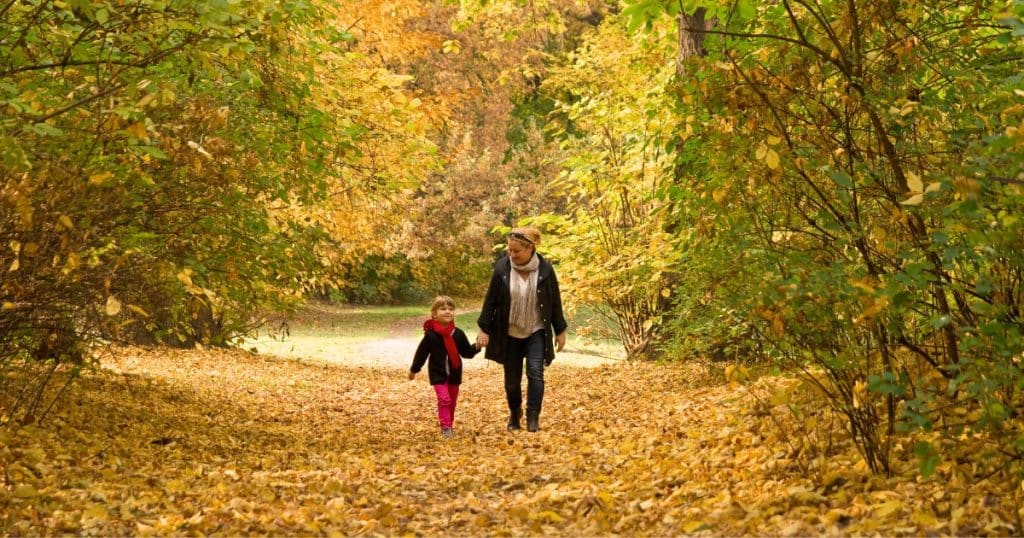As the days get crisper and the leaves transform into brilliant oranges, reds, and yellows, it’s the perfect time to explore fall sensory activities with your child.
While these are fun activities, they also play an important role in sensory development and regulation, helping individuals with autism process and respond to sensory information in a more adaptive way.
There are countless creative and engaging fall sensory activities you can use to stimulate all and further advance their development.
Whether you want to do indoor activities when it might be a bit chilly outside or simply seize the day outdoors during the autumn season, fall sensory play ideas will provide you and your autistic child with a sensory wonderland.
If you’d like to explore more sensory play activities, you can download your free guide here:
Download your FREE guide on
Sensory Play Ideas
Fall sensory activities for toddlers
As the fall season unfolds, it’s a wonderful time to introduce your toddler to a variety of sensory activities that capture the sights, smells, and textures of autumn. These activities will engage their senses and make the most of the changes happening around them.
From exploring the rich scents of spice-scented playdough to the tactile experience of leaf pile exploration, each activity provides a unique way to connect with the season.
1. Pumpkin sensory bin
You can prepare a fall sensory bin with mini pumpkins, dried corn, and fall-colored leaves. Then, add things like rice colored with orange and brown food coloring to provide the texture of pumpkin guts.
Including scoops, spoons, and small containers to encourage scooping can help improve fine motor skills.
This activity engages toddlers in different textures and colors, which allows them to improve both tactile and visual sensory skills.
It is great for exploration without the mess of actual pumpkins. Always have adult supervision for any activities with young children.
2. Spice-scented playdough
To make a spice-scented playdough, you simply add fall spices such as cinnamon, nutmeg, and pumpkin pie to homemade play dough.
Aromatic play dough heightens the sense of smell while providing a fun, tactile experience. Young children can squish, roll, and shape the dough to build fine motor skills, which will strengthen their hand muscles.

Adding a few little cookie cutters in the shapes of leaves or pumpkins will engage them in creative play- a multi-sensory activity, one that would involve touching, smelling, and looking.
Before considering this, you should be mindful of whether the child may be sensitive to the smell of such spices.
3. Leaf pile exploration
There will be freshly fallen leaves everywhere for you to collect and lay them in a small pile in the backyard. With toddlers, you can let them jump and play with the fallen leaves and allow them to feel their crunchiness.
This activity will thrill the auditory and tactile senses because it is a natural sensory experience that also includes physical exercise. As the child is playing in the leaves, you should encourage them to describe the feelings and sounds they are experiencing.
This will help them develop language skills and sensory exploration. Leaf pile exploration is a wonderful way to connect with nature, but for young kids, it’s an energy-burning and free-play opportunity as well.
4. Sensory bags with fall elements
Sensory bags are a great way to introduce toddlers to textures, as they are mess-free. When you make a sensory bag, make sure you fill it with colored rice, small plastic acorns, and dried leaves.
You can even add a few drops of some fall-scented essential oils to make them even more fall-like. Once that’s finished, you seal the bags up tight and let your toddler squish and explore.

This activity satisfies numerous senses: touch, sight, and smell, without any choking hazard from small parts. Portable sensory bags are great for on-the-go sensory play, calming activities at transitions, or while traveling.
Always supervise young children while playing with small items to ensure their safety and prevent any choking hazards.
Outdoor fall activities for preschoolers
Outdoor fall activities offer a fun way to connect with the season while encouraging creativity and sensory exploration.
From a nature walk scavenger hunt to hands-on art projects like leaf rubbing and pumpkin painting, these activities are designed to capture the essence of this time of the year.
1. Nature walk scavenger hunt
Never underestimate the power of a good old nature walk because it can be an extremely fun and soothing fall sensory play activity.
Consider making a list of items for them to find, such as acorns, pinecones, different color leaves, and fall flowers. This will allow you to encourage preschool children to use both sight and touch to locate and collect items.
Such a sensory activity will not only stimulate sensory development but will also encourage outdoor exploration and physical activity.

When you target scavenger hunts to your child’s interests and needs for sensory stimulation, it will be an even better opportunity for you to merge learning with sensory play.
This is an absolutely great way to teach your child new words and relate them to nature, colors, and shapes.
You can also organize a scavenger hunt that focuses on fall colors. To do this, you will need to make a chart with swatches containing common fall colors, like red, yellow, orange, and brown.
Once you have this all organized, you can instruct the preschoolers to find items in nature that match each color. This game helps strengthen visual discrimination for the child while they appreciate the beauty of autumn colors.
2. Leaf rubbing art
Leaf rubbing is a classic fall activity and is an addition of art to sensory play. In leaf rubbing, you place a piece of paper over a fallen leaf and rub a crayon or colored pencil on top of the paper to make a leaf print.
This activity enables preschoolers to engage in explorations of texture and color while also engaging in a creative art project.
Plus, it is a great way for children to bring sensory play and creative expression together while they improve fine motor skills.
Leaf rubbing lets children observe the details of veins and edges of leaves, increasing their curiosity and making them attentive to everything surrounding them in nature.
3. Pumpkin painting
Pumpkin carving can be tricky for young children with autism. Instead, painting may be a more suitable option for preschoolers.
To make this activity more interesting, offer a variety of colors, brushes, and even things like glitter or googly eyes to let preschoolers decorate their pumpkins.

This art project is a great opportunity for preschoolers to develop creativity and sensory exploration of different textures and colors, all with a safe alternative to carving.
Plus, it’s not only about creativity. Painting pumpkins is a wonderful avenue for children to express their individuality and practice decision-making skills.
You can even make this into a themed activity by suggesting designs related to favorite fall stories or characters that can really add to the creative element.
4. Sensory bin with fall-themed items
To create a fall-themed sensory bin, you can use items such as dried corn, small pumpkin decorations, scented play dough, pinecones, and fabric leaves.
When introducing preschoolers to these things, start by letting them reach in with their hands, as they will engage both their tactile and olfactory senses.
This can be very fascinating to them once interactive elements come into place, such as small toys or figurines that go with the fall theme.
The addition of tools like tongs or tweezers will also help children to increase their fine motor skills. Such sensory bins give a focused, contained space for sensory play both indoors and outdoors.
Always supervise young children while playing with small items to ensure their safety and prevent any choking hazards.
Fall adventures for sensory growth
These fall sensory activities help the autistic child regulate their senses better, develop fine motor movements, and further their imaginative play. They give a structured way for children to explore their environment, which otherwise may overwhelm their senses.
By creating these fall adventures, you will enable the children to develop a greater awareness of their sensory surroundings while having fun.

The activities related to fall introduce great opportunities for growth and discovery. They incorporate the child’s senses while enhancing social skills, language, and health.
Make full use of the vibrancy of this autumn season through the use of various sensory experiences that best suit a child’s unique needs and preferences.
FAQs
Q: What are the benefits of the autumn sensory bin?
A: Autumn sensory bins enhance tactile exploration, fine motor skills, and sensory regulation. They encourage imaginative play, teach counting and sorting, and help kids get comfortable with textures. Their calming effect also aids focus and anxiety management.
Q: What activities are considered sensory play?
A: Sensory play includes any activities that invite one or all of the senses: touching, seeing, hearing, tasting, and smelling. Some examples include sensory bin activities, exploring different textures with play dough, water play, and outdoor activities such as playing in leaf piles.
Q: How do you make sensory games?
A: When creating sensory games, choose materials that engage a child’s senses, like dyed rice, textured items, or scented elements. Add play activities such as sorting or mixing to enhance the experience. Sensory games can be adjusted to fit different developmental levels and sensory preferences, meeting each child’s specific needs.
References
Bašić, Aleksandra & Maćešić-Petrović, Dragana & Pantovic, Ljiljana & Parezanović, Ružica & Gajić, Anja & Arsić, Bojana & Nikolic, Jovana. (2021). SENSORY INTEGRATION AND ACTIVITIES THAT PROMOTE SENSORY INTEGRATION IN CHILDREN WITH AUTISM SPECTRUM DISORDERS. Journal Human Research in Rehabilitation. 11. 28-38. 10.21554/hrr.042104.
Bavosa, A. (2018). Seasonal activities for sensorimotor development. Taylor & Francis. https://books.google.ba/books?hl=en&lr=&id=KHMIEQAAQBAJ&oi=fnd&pg=PP1&dq=seasonal+sensory+activities&ots=Fn1giCRbHb&sig=nPurpEdw37RblFU4SHxJxpnfp_8&redir_esc=y#v=onepage&q=seasonal%20sensory%20activities&f=false
Ghazali, Roslinda & Sakip, Siti & Samsuddin, Ismail. (2019). Creating Positive Environment for Autism Using Sensory Design. Environment-Behaviour Proceedings Journal. 4. 10.21834/e-bpj.v4i10.1618.
Sensing seasons, Exploring multisensory architecture as a tool for inspiration https://aaltodoc.aalto.fi/items/7003748e-d2b6-48df-b211-a2d12aa14d8a
Yin M, Li K, Xu Z, Jiao R, Yang W (2024) Exploring the impact of autumn color and bare tree landscapes in virtual environments on human well-being and therapeutic effects across different sensory modalities. PLOS ONE 19(4): e0301422. https://doi.org/10.1371/journal.pone.0301422


